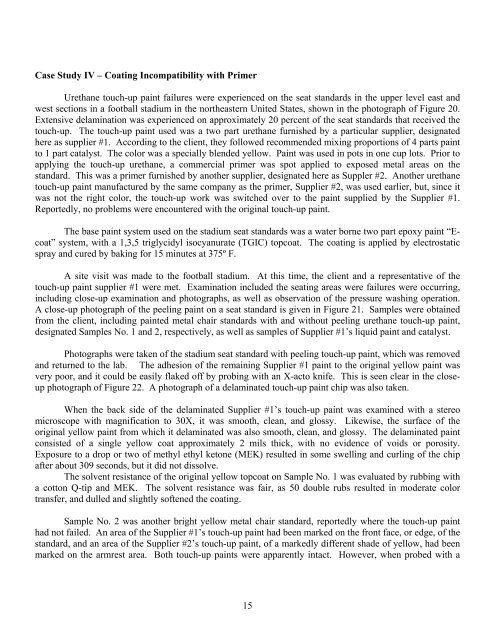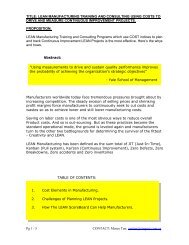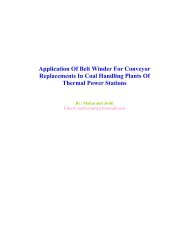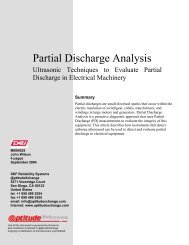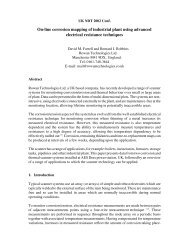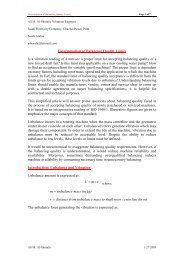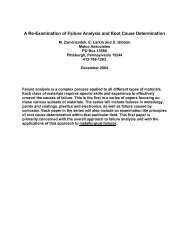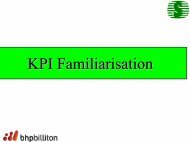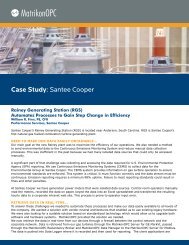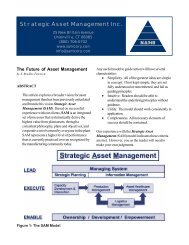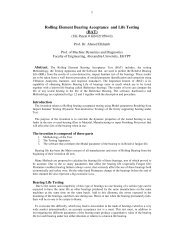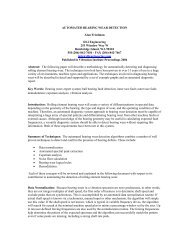Failure Analysis of Paints and Coatings - Plant Maintenance ...
Failure Analysis of Paints and Coatings - Plant Maintenance ...
Failure Analysis of Paints and Coatings - Plant Maintenance ...
Create successful ePaper yourself
Turn your PDF publications into a flip-book with our unique Google optimized e-Paper software.
Case Study IV – Coating Incompatibility with PrimerUrethane touch-up paint failures were experienced on the seat st<strong>and</strong>ards in the upper level east <strong>and</strong>west sections in a football stadium in the northeastern United States, shown in the photograph <strong>of</strong> Figure 20.Extensive delamination was experienced on approximately 20 percent <strong>of</strong> the seat st<strong>and</strong>ards that received thetouch-up. The touch-up paint used was a two part urethane furnished by a particular supplier, designatedhere as supplier #1. According to the client, they followed recommended mixing proportions <strong>of</strong> 4 parts paintto 1 part catalyst. The color was a specially blended yellow. Paint was used in pots in one cup lots. Prior toapplying the touch-up urethane, a commercial primer was spot applied to exposed metal areas on thest<strong>and</strong>ard. This was a primer furnished by another supplier, designated here as Suppler #2. Another urethanetouch-up paint manufactured by the same company as the primer, Supplier #2, was used earlier, but, since itwas not the right color, the touch-up work was switched over to the paint supplied by the Supplier #1.Reportedly, no problems were encountered with the original touch-up paint.The base paint system used on the stadium seat st<strong>and</strong>ards was a water borne two part epoxy paint “Ecoat”system, with a 1,3,5 triglycidyl isocyanurate (TGIC) topcoat. The coating is applied by electrostaticspray <strong>and</strong> cured by baking for 15 minutes at 375º F.A site visit was made to the football stadium. At this time, the client <strong>and</strong> a representative <strong>of</strong> thetouch-up paint supplier #1 were met. Examination included the seating areas were failures were occurring,including close-up examination <strong>and</strong> photographs, as well as observation <strong>of</strong> the pressure washing operation.A close-up photograph <strong>of</strong> the peeling paint on a seat st<strong>and</strong>ard is given in Figure 21. Samples were obtainedfrom the client, including painted metal chair st<strong>and</strong>ards with <strong>and</strong> without peeling urethane touch-up paint,designated Samples No. 1 <strong>and</strong> 2, respectively, as well as samples <strong>of</strong> Supplier #1’s liquid paint <strong>and</strong> catalyst.Photographs were taken <strong>of</strong> the stadium seat st<strong>and</strong>ard with peeling touch-up paint, which was removed<strong>and</strong> returned to the lab. The adhesion <strong>of</strong> the remaining Supplier #1 paint to the original yellow paint wasvery poor, <strong>and</strong> it could be easily flaked <strong>of</strong>f by probing with an X-acto knife. This is seen clear in the closeupphotograph <strong>of</strong> Figure 22. A photograph <strong>of</strong> a delaminated touch-up paint chip was also taken.When the back side <strong>of</strong> the delaminated Supplier #1’s touch-up paint was examined with a stereomicroscope with magnification to 30X, it was smooth, clean, <strong>and</strong> glossy. Likewise, the surface <strong>of</strong> theoriginal yellow paint from which it delaminated was also smooth, clean, <strong>and</strong> glossy. The delaminated paintconsisted <strong>of</strong> a single yellow coat approximately 2 mils thick, with no evidence <strong>of</strong> voids or porosity.Exposure to a drop or two <strong>of</strong> methyl ethyl ketone (MEK) resulted in some swelling <strong>and</strong> curling <strong>of</strong> the chipafter about 309 seconds, but it did not dissolve.The solvent resistance <strong>of</strong> the original yellow topcoat on Sample No. 1 was evaluated by rubbing witha cotton Q-tip <strong>and</strong> MEK. The solvent resistance was fair, as 50 double rubs resulted in moderate colortransfer, <strong>and</strong> dulled <strong>and</strong> slightly s<strong>of</strong>tened the coating.Sample No. 2 was another bright yellow metal chair st<strong>and</strong>ard, reportedly where the touch-up painthad not failed. An area <strong>of</strong> the Supplier #1’s touch-up paint had been marked on the front face, or edge, <strong>of</strong> thest<strong>and</strong>ard, <strong>and</strong> an area <strong>of</strong> the Supplier #2’s touch-up paint, <strong>of</strong> a markedly different shade <strong>of</strong> yellow, had beenmarked on the armrest area. Both touch-up paints were apparently intact. However, when probed with a15


